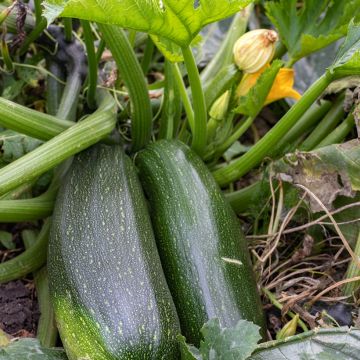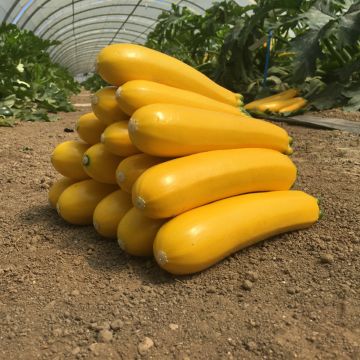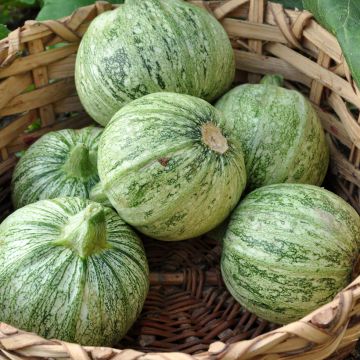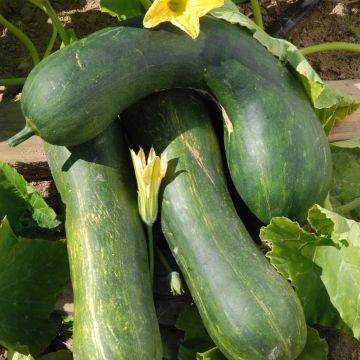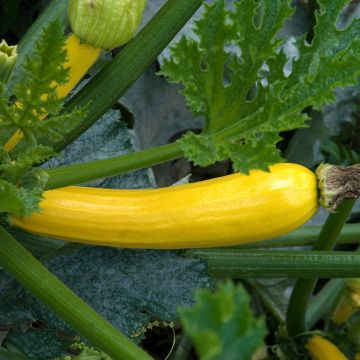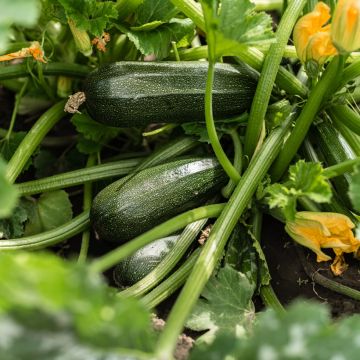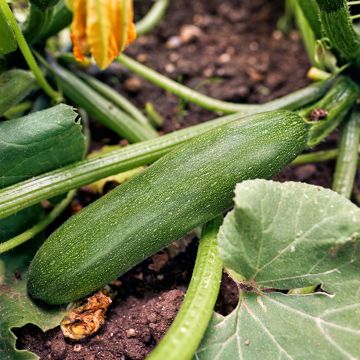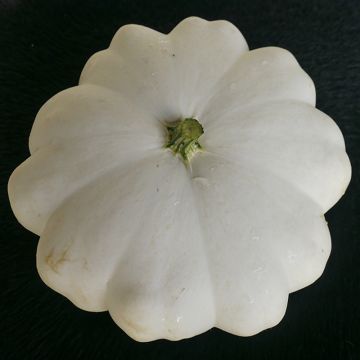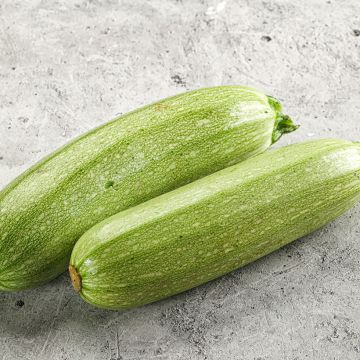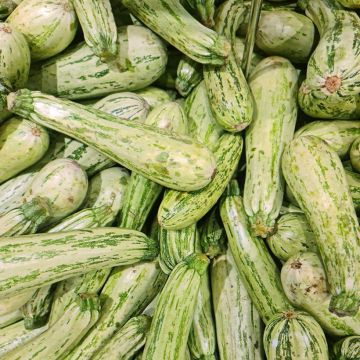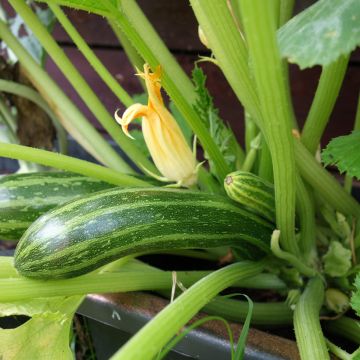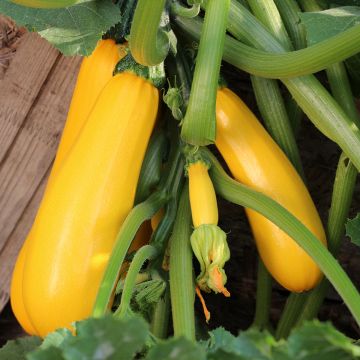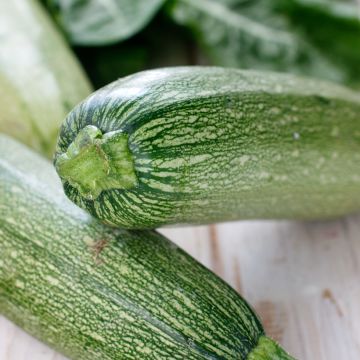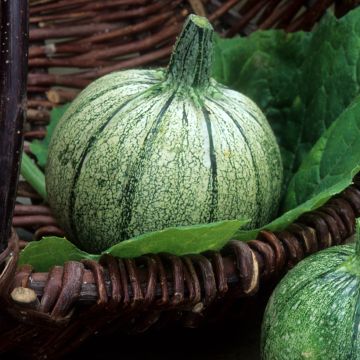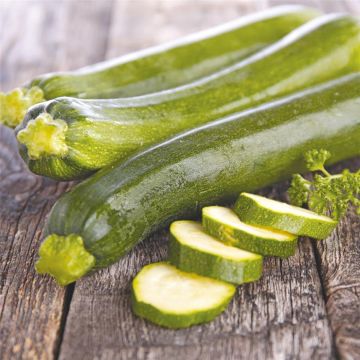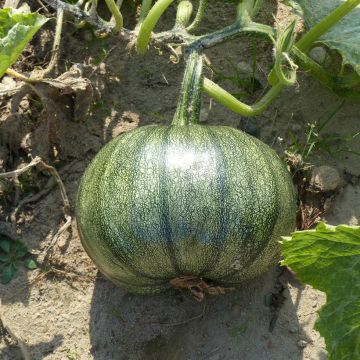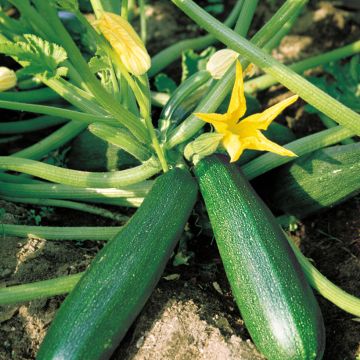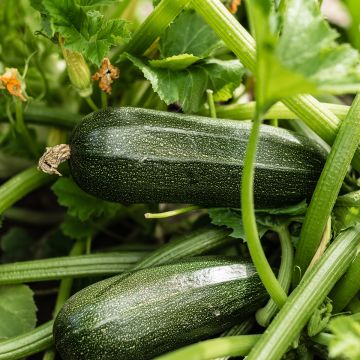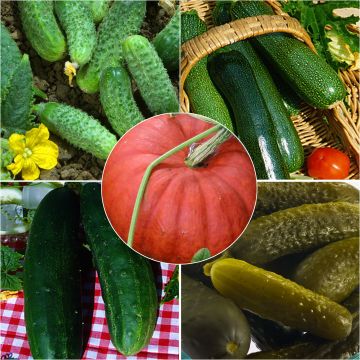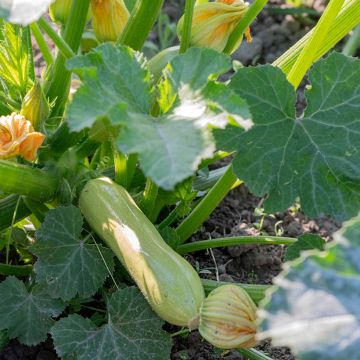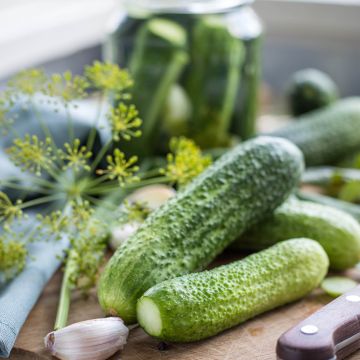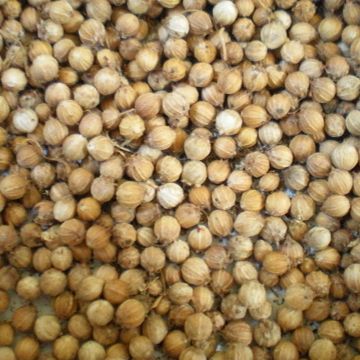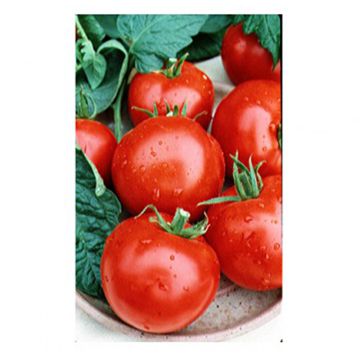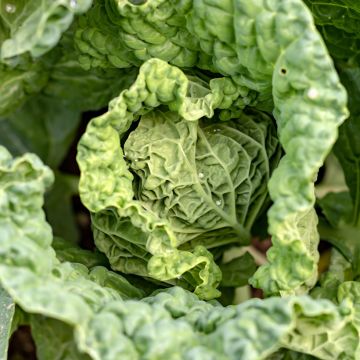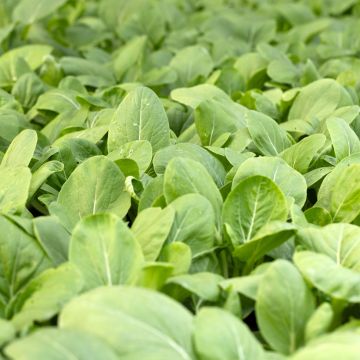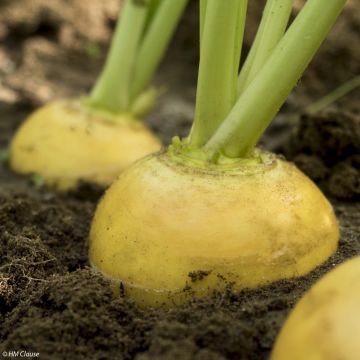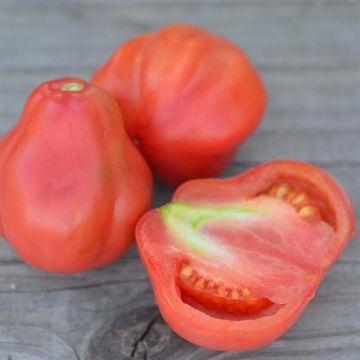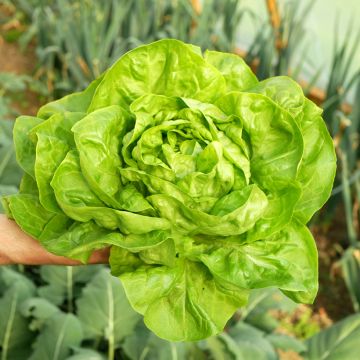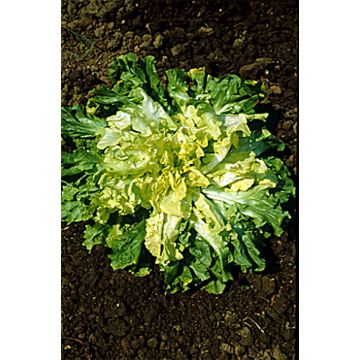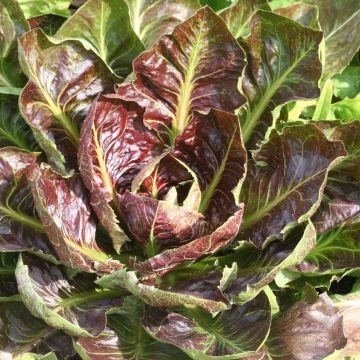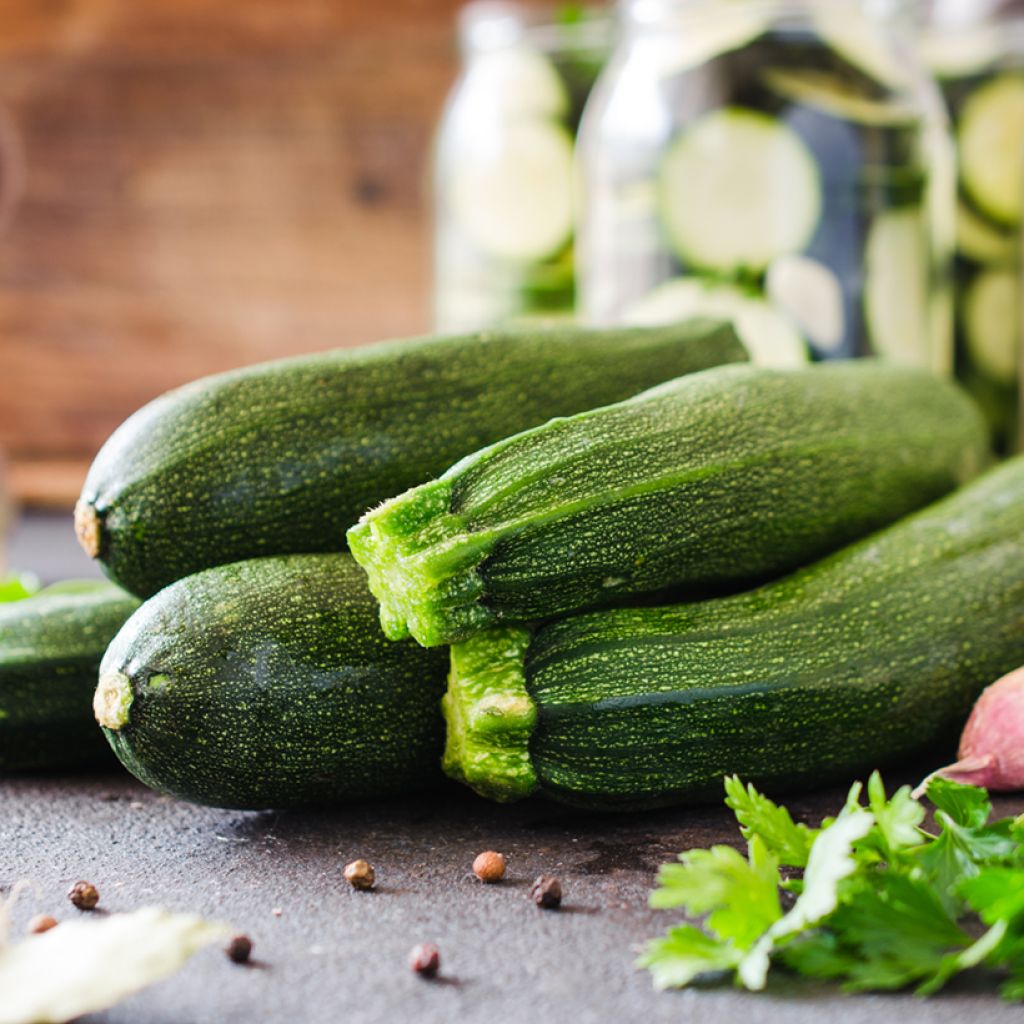

Courgette Parthenon F1
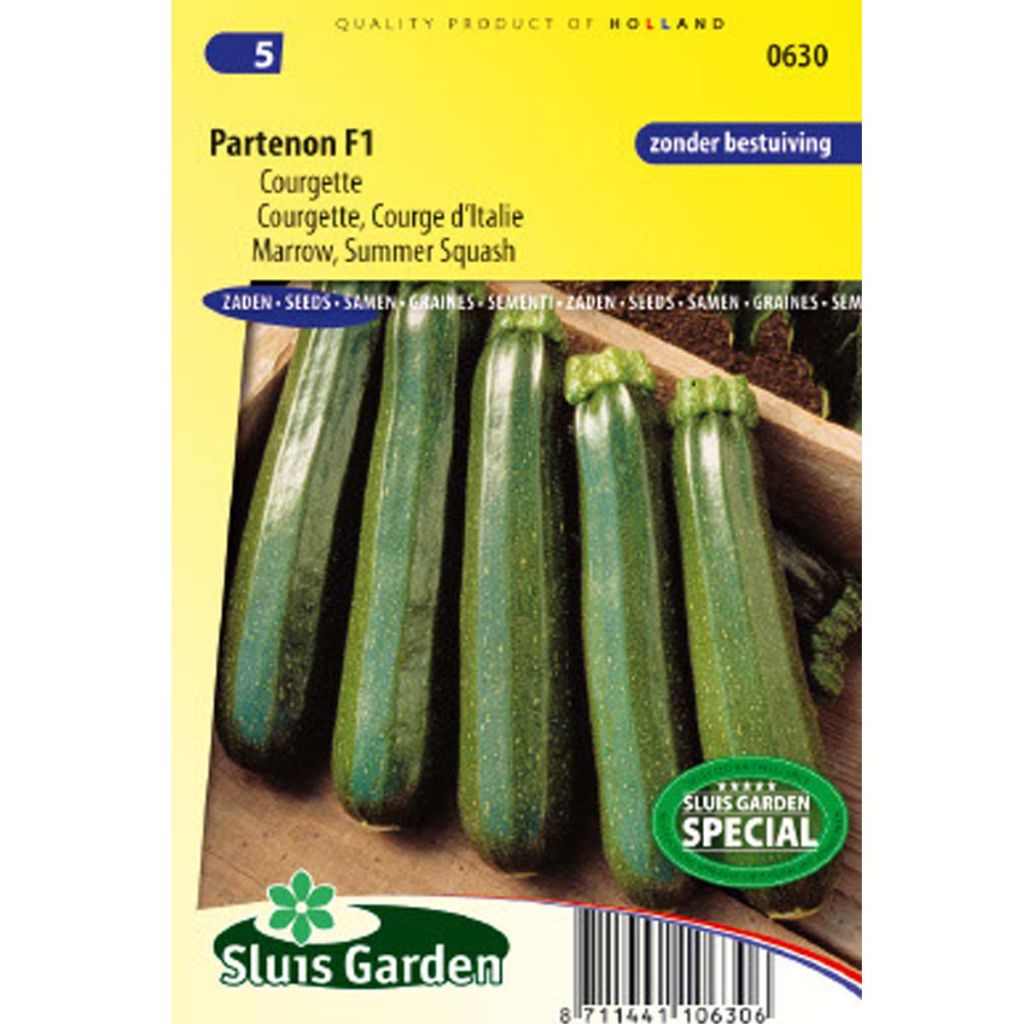

Courgette Parthenon F1
Courgette Parthenon F1
Cucurbita pepo Partenon F1
Zucchini
Seeds ordered in mid-June and still not received almost three weeks later. Two complaints sent, still waiting for a response...
Annik, 04/07/2020
Why not try an alternative variety in stock?
View all →This plant carries a 6 months recovery warranty
More information
We guarantee the quality of our plants for a full growing cycle, and will replace at our expense any plant that fails to recover under normal climatic and planting conditions.
Seed-only orders are dispatched by sealed envelope. The delivery charge for seed-only orders is €3.90.
Description
'Parthenon F1' Courgette or Zucchini is high-yielding variety that doesn't require insect pollination to set fruit. Each plant bears 15-20 cm long, slender dark green fruits all summer long. This early-maturing variety even gives good results in poor weather conditions or cooler regions. Sow from March to June and harvest from July to October.
Orange, green, red, yellow, black or blue; smooth, ribbed, bumpy, hard-skinned, soft-skinned... Summer and winter squash comes in an astonishing array of shapes, colours and sizes due to their ability to hybridise easily. Winter squash refers to all pumpkins and squashes with tough skin and delicately sweet flesh. Summer squash, including courgettes (or zucchini), are different varieties that are harvested young, whilst the skin and seeds are still tender.
Both summer and winter squash are native to America and belong to the large Cucurbitaceae or gourd family (also known as cucurbits). They were introduced in Europe during the 16th century. The plants are generally annual vines that use tendrils for support. They are monoecious, meaning that both male and female flowers are produced on the same plant. Female flowers are easily identified by an inferior ovary located at the base of the flower, which will become a fruit when pollinated. The edible male squash blossoms are often harvested after pollination then fried or stuffed. The female flowers are edible too, however picking them will of course result in fewer fruits. Squash is a very versatile vegetable that is delicious roasted, in gratin or blended into delicious soups. Courgette is a staple ingredient in ratatouille, couscous and many other popular Mediterranean dishes. Both courgette and squash are low in calories and high in minerals and vitamins, especially provitamin A and vitamin B.
Harvesting: Squashes should preferably be harvested at full maturity, unless they are liable to rot when left on the plant. If this is the case, they can be brought indoors to finish their maturation. Courgettes are harvested whilst they are still young and tender. Handle summer and winter squash with care to avoid damaging the skin.
Storage: Courgettes do not store well because of their fine skin. It is possible to freeze them in slices for later use. Thick-skinned winter squashes will keep for several months and can be eaten all winter long. Unlike other fruits and vegetables, they store better in a warm, dry place. No need to store them in the dark: they are great to decorate the house during the colder months!
Good to know: Placing the squash fruits on top of a slate or roof tile will keep them from being in direct contact with the ground. This prevents them from rotting due to excessive humidity. Squash and courgette plants favour moist soil and benefit from mulching, especially during the hotter summer months. Both are very prone to powdery mildew (a fungal disease that causes a white down to form on the surface of the leaves). When watering, try to avoid getting water on the leaves or flowers. Grow your squash plants alongside alliums such as chives, onions or shallots or members of the Fabaceae family (formerly legumes) such as beans or peas. Avoid growing them next to cucumber plants.
Even if the vegetable garden is first and foremost a place for growing great quality veg, it’s always a good idea to leave a bit of room for flowers. Growing flowers alongside your vegetable plants will make your general gardening experience more enjoyable and is a great way to attract pollinators and repel garden pests! Flowers such as gaillardia, marigolds, zinnias, cosmos or nasturtiums can be sown in and around the rows of vegetables. Herbs such as dill can be very useful also. Bear in mind that some companion plants self-seed easily and can be a bit invasive (borage, chives, lemon balm etc.)
NB: This variety is marked F1 for "F1 hybrid" meaning that its qualities are derived from carefully selected parent plants. This results in a variety that is both full of flavour and resistant to diseases. Sometimes criticized or wrongly assimilated to GMOs, F1 hybrid seeds have the advantage of producing reliable, uniform, disease resistant plants. Unfortunately, these qualities will not be passed on to following generations.
Report an error about the product description
Harvest
Plant habit
Foliage
Botanical data
Cucurbita
pepo
Partenon F1
Cucurbitaceae
Zucchini
Cultivar or hybrid
Biennial
Other Courgette seeds
Planting and care
Description du semis : les semis des courges et courgettes est chose très gratifiant à la fois pour la rapidité de la levée des plants que pour la facilité de culture. Elles ont besoin d'une terre bien drainée et riche en matières organiques. Elles demandent aussi pour de beaux fruits beaucoup de soleil et beaucoup d'eau.
En culture précoce : en mars ou avril semez vos graines en poquets par deux ou trois dans des caissettes ou des pots avec une terre riche en matières organiques. Recouvrez alors légèrement puis arrosez afin de maintenir toujours une légère humidité. La levée est assez rapide : au terme d'une dizaine de jours il est déjà temps d'éclaircir en choisissant les pieds les plus robustes et allez les repiquer en pleine terre que vous aurez ameublie au préalable. Chaque pied exige beaucoup de place. Dans la mesure du possible, espacez-les de 1 m. Creusez des trous de 20 à 25 cm en tous sens que vous remplirez au deux-tiers de compost. Positionnez alors le plant et remettez la terre puis tassez vigoureusement.
En culture de saison : une fois tout risque de gelé écarté, c'est-à-dire fin avril ou mai selon les régions, semez en poquets deux à trois graines à 2 à 3 cm de profondeur. Tassez légèrement, puis attendez une dizaine de jours avant de voir apparaître les premières pousses. Lorsqu'elles auront atteint quelques cm, éclaircissez en ne conservant que les pieds les plus robustes.
La récolte s'effectue dès juillet pour les courgettes cueillies immatures. Les courges, sont cueillies à l'automne. Une méthode simple pour connaître le moment opportun de la récolte est d'observer le pédoncule. s'il est bien sec, et que le fruit est prêt à se détacher de lui-même, c'est que ce moment est arrivé.
Seedlings
Care
Intended location
-
, onOrder confirmed
Reply from on Promesse de fleurs
Vegetable seeds
Haven't found what you were looking for?
Hardiness is the lowest winter temperature a plant can endure without suffering serious damage or even dying. However, hardiness is affected by location (a sheltered area, such as a patio), protection (winter cover) and soil type (hardiness is improved by well-drained soil).

Photo Sharing Terms & Conditions
In order to encourage gardeners to interact and share their experiences, Promesse de fleurs offers various media enabling content to be uploaded onto its Site - in particular via the ‘Photo sharing’ module.
The User agrees to refrain from:
- Posting any content that is illegal, prejudicial, insulting, racist, inciteful to hatred, revisionist, contrary to public decency, that infringes on privacy or on the privacy rights of third parties, in particular the publicity rights of persons and goods, intellectual property rights, or the right to privacy.
- Submitting content on behalf of a third party;
- Impersonate the identity of a third party and/or publish any personal information about a third party;
In general, the User undertakes to refrain from any unethical behaviour.
All Content (in particular text, comments, files, images, photos, videos, creative works, etc.), which may be subject to property or intellectual property rights, image or other private rights, shall remain the property of the User, subject to the limited rights granted by the terms of the licence granted by Promesse de fleurs as stated below. Users are at liberty to publish or not to publish such Content on the Site, notably via the ‘Photo Sharing’ facility, and accept that this Content shall be made public and freely accessible, notably on the Internet.
Users further acknowledge, undertake to have ,and guarantee that they hold all necessary rights and permissions to publish such material on the Site, in particular with regard to the legislation in force pertaining to any privacy, property, intellectual property, image, or contractual rights, or rights of any other nature. By publishing such Content on the Site, Users acknowledge accepting full liability as publishers of the Content within the meaning of the law, and grant Promesse de fleurs, free of charge, an inclusive, worldwide licence for the said Content for the entire duration of its publication, including all reproduction, representation, up/downloading, displaying, performing, transmission, and storage rights.
Users also grant permission for their name to be linked to the Content and accept that this link may not always be made available.
By engaging in posting material, Users consent to their Content becoming automatically accessible on the Internet, in particular on other sites and/or blogs and/or web pages of the Promesse de fleurs site, including in particular social pages and the Promesse de fleurs catalogue.
Users may secure the removal of entrusted content free of charge by issuing a simple request via our contact form.
The flowering period indicated on our website applies to countries and regions located in USDA zone 8 (France, the United Kingdom, Ireland, the Netherlands, etc.)
It will vary according to where you live:
- In zones 9 to 10 (Italy, Spain, Greece, etc.), flowering will occur about 2 to 4 weeks earlier.
- In zones 6 to 7 (Germany, Poland, Slovenia, and lower mountainous regions), flowering will be delayed by 2 to 3 weeks.
- In zone 5 (Central Europe, Scandinavia), blooming will be delayed by 3 to 5 weeks.
In temperate climates, pruning of spring-flowering shrubs (forsythia, spireas, etc.) should be done just after flowering.
Pruning of summer-flowering shrubs (Indian Lilac, Perovskia, etc.) can be done in winter or spring.
In cold regions as well as with frost-sensitive plants, avoid pruning too early when severe frosts may still occur.
The planting period indicated on our website applies to countries and regions located in USDA zone 8 (France, United Kingdom, Ireland, Netherlands).
It will vary according to where you live:
- In Mediterranean zones (Marseille, Madrid, Milan, etc.), autumn and winter are the best planting periods.
- In continental zones (Strasbourg, Munich, Vienna, etc.), delay planting by 2 to 3 weeks in spring and bring it forward by 2 to 4 weeks in autumn.
- In mountainous regions (the Alps, Pyrenees, Carpathians, etc.), it is best to plant in late spring (May-June) or late summer (August-September).
The harvesting period indicated on our website applies to countries and regions in USDA zone 8 (France, England, Ireland, the Netherlands).
In colder areas (Scandinavia, Poland, Austria...) fruit and vegetable harvests are likely to be delayed by 3-4 weeks.
In warmer areas (Italy, Spain, Greece, etc.), harvesting will probably take place earlier, depending on weather conditions.
The sowing periods indicated on our website apply to countries and regions within USDA Zone 8 (France, UK, Ireland, Netherlands).
In colder areas (Scandinavia, Poland, Austria...), delay any outdoor sowing by 3-4 weeks, or sow under glass.
In warmer climes (Italy, Spain, Greece, etc.), bring outdoor sowing forward by a few weeks.

































